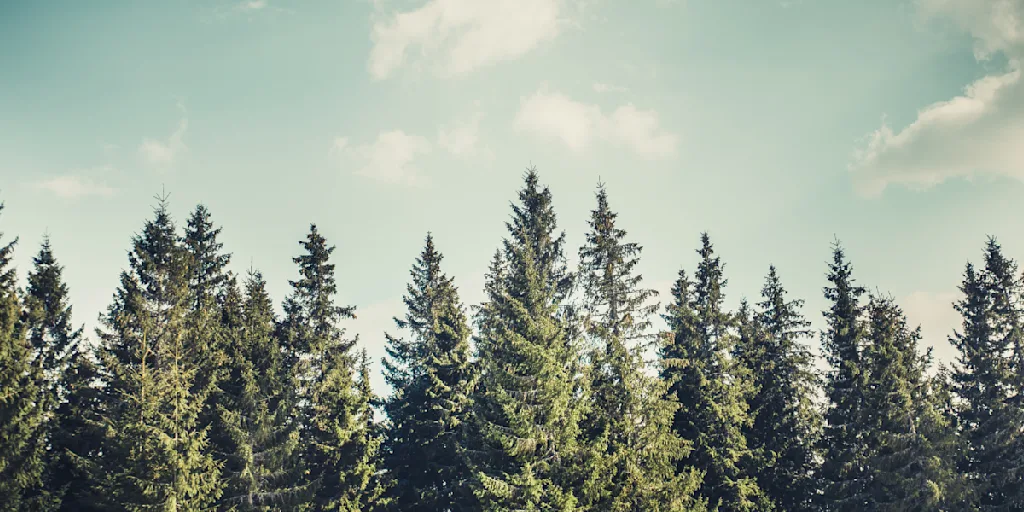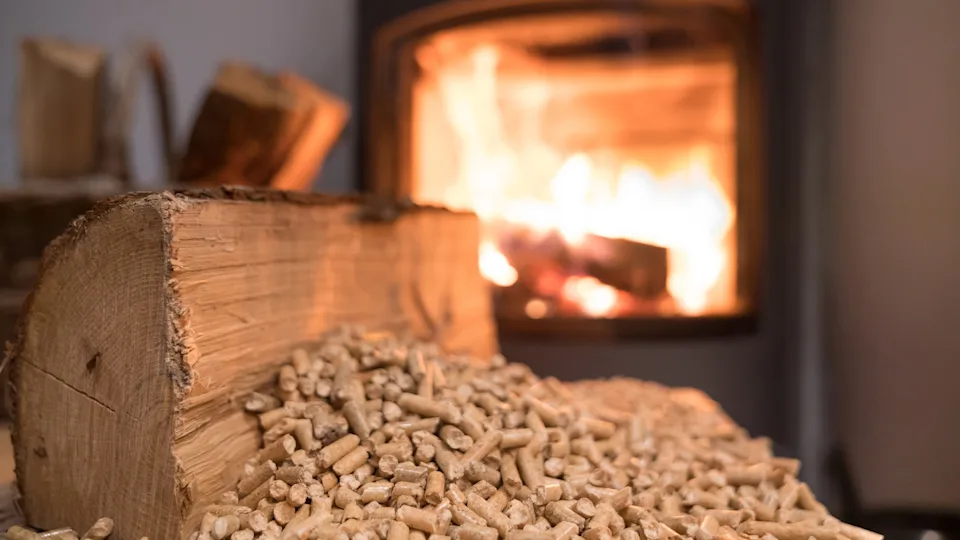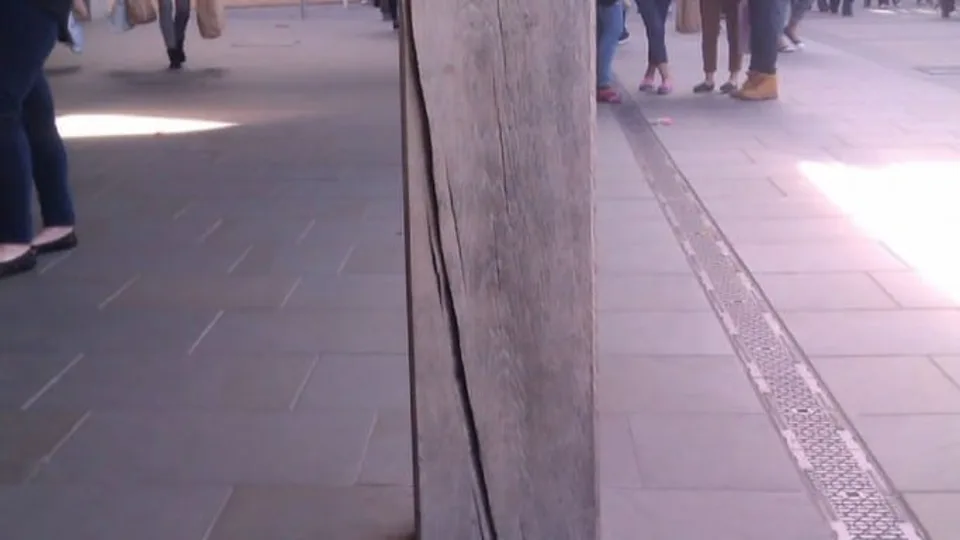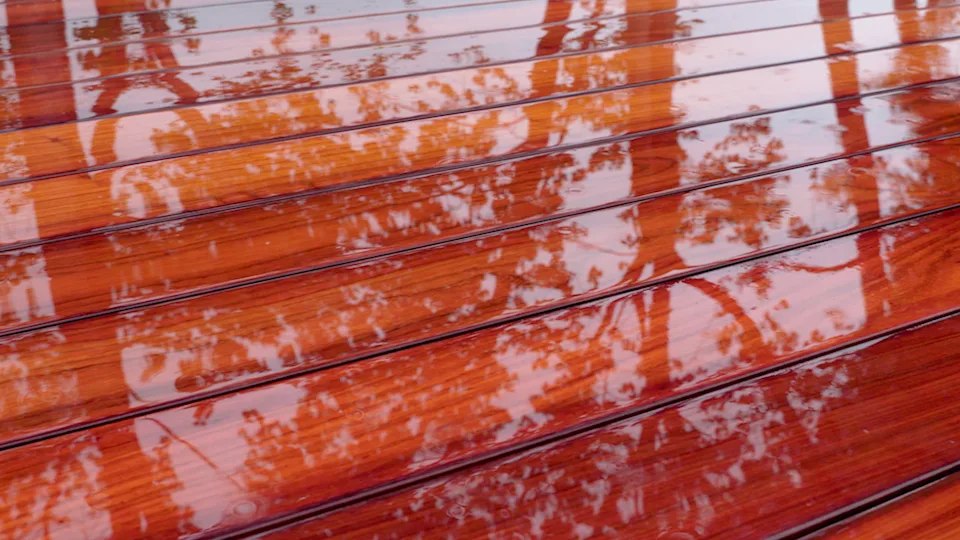The best timber for log cabins & garden buildings: Why Tuin chooses slow-grown spruce over pine & cedar
If you’re looking to buy a log cabin, summerhouse, gazebo or even a shed for your garden, it can help to know what type of timber your chosen supplier uses along with its pros and cons. There are a number of options to choose from, but most log cabins in the UK are usually made from pine or spruce.

The type of wood you choose will affect the price, look and longevity of your log cabin or garden building so it’s important to be aware of the differences so you can make an informed decision about what’s going to best suit your needs, budget and the finish you’re looking for.
In this blog, we’ll discuss the different types of timber available, their pros and cons, the key differences and why, here at Tuin, we prefer to manufacture our garden buildings using slow-grown spruce.
Why does timber quality matter in wooden garden buildings?
When you’re investing in a log cabin or any garden building, the quality of the timber used by the manufacturer is a critical factor to consider. The type and grade of wood will affect how your building will perform, look and last over time.
Types of timber for log cabins and garden buildings
Let’s have a look at the types of timber available for log cabins and what their properties are.
Slow-grown spruce: The gold standard for log cabins
Spruce is the standout choice for log cabins and other wooden garden buildings. Tuin’s log cabins and buildings are entirely made from spruce, including the roof and floors.
But why?
Here are just a few reasons…
Strength and durability
Slow grown spruce has a tighter grain than other types of timber which provides a stronger and more durable wood. It has great structural integrity and excellent resistance to wear, decay and insect damage, which means our log cabins are able to stand the test of time and stand up against the UK’s unpredictable and ever changing weather conditions.
In addition, spruce does not shrink or warp as much as other types of wood, which means log cabins can be built precisely without the risk of becoming distorted, maintaining their structural integrity and appearance over time.
Natural beauty
Spruce’s light colour and subtle grain pattern provide the timeless and natural look that many associate with log cabins. This type of wood will complement any garden setting and can be easily stained, painted or treated to achieve your desired finish or enhance the natural beauty of the wood. Spruce provides you with a number of design possibilities and means you can customise your garden building to blend in with your home and garden.
Insulation properties
Slow-grown spruce provides excellent natural insulation due to its density. This helps our log cabins maintain their interior temperature, whatever the weather outside, and means you can use your garden building for a range of uses.
Why not pine, cedar or other timbers?
When researching log cabins or wooden garden buildings, you might find other companies selling other types of timber, such as pine or cedar.
Here’s a little bit more information about each of these types of timber and why we choose not to use these alternatives at Tuin.
Pine
Pine is a redwood and is widely used for a range of daily items. You might have some pine furniture at home. Pine is not as dense as spruce, which mean it absorbs water faster. It’s the cheaper of the two types of timber that can be used in log cabins.
It’s commonly used in the garden for fencing panels, posts, home and garden furniture and play equipment, and it’s pressure treated to protect it from rotting and weathering.
However, pine is a fast-growing softwood, which means it has a looser grain and more knots than slow-grown spruce. This means it’s more prone to warping, twisting and shrinking, especially if it hasn’t been kiln dried, resulting in gaps or misaligned boards over time – not ideal for log cabin construction!
To save money on their log cabins, some companies may use pine, so lookout for the type of wood they’re using to ensure your investment is going to stand the test of time. A pine log cabin will often be very low cost!
Cedar
Cedar is well-known for its natural resistance to rot and insects, requiring less chemical treatment than other woods. However, it comes at a significantly higher cost, so it’s not as practical for most residential garden buildings. It also tends to be softer than spruce so can dent or mark more easily.
Douglas fir, larch and exotic hardwoods
Some heavier timbers, such as Douglas fir or larch, offer excellent strength and durability, but tend to be used for heavy timber framing or specialist architectural builds. They can also be more expensive, which can increase the cost of your garden building unnecessarily.
We use Douglas timber for some of our gazebos due to its strength and durability, but much less wood is required for a gazebo than log cabin, making spruce the superior choice for this purpose.
What about a spruce/pine mix of timber?
Some companies use a spruce/pine mix of timber to save money, both in the manufacturing and for you, the customer. However, the main difference between the two timbers is the denseness, which can make a huge difference when used to create a log cabin.
Here are some of the problems that can occur over the long term if you opt for a log cabin with a mix of spruce and pine wood:
Different rates of expansion can cause splits, warps, gaps and long-term problems
Pine is not as dense and absorbs more water than spruce, so will need to be treated very well
Pine is more red in appearance than spruce, which is not as attractive inside your log cabin
Knots are looser in pine, and there are generally more of them and they are more likely to fall out. So, before you apply your treatment, we recommend ‘knotting’ the logs first before you treat them
Why Tuin stands by slow-grown spruce for log cabins and garden buildings
When it comes to garden buildings and log cabins, the timber you choose matters. From structural stability and insulation to appearance and long-term maintenance, high-quality timber will determine how well your log cabin stands up to weathering over time.
At Tuin, we build all of our log cabins using slow-grown spruce. It offers an unbeatable combination of:
Strength and stability, resisting warping and splitting
Minimal knots and resin for a beautiful, smooth finish
Long lifespan with low maintenance, protecting your investment for years to come
By choosing to build our log cabins this way, we ensure we offer you durable, high-performing and aesthetically pleasing log cabins.
Browse our full range of log cabins, summer houses and gazebos and find the perfect solution for your garden today.
Want to know more about timber and your log cabin? You might like these blogs too:
Understanding moisture content in timber: the hidden factor in log cabin wood treatment
Why does timber crack and split? Understanding your timber garden building or fencing
Need more help? Our friendly team is always here to offer expert support.






